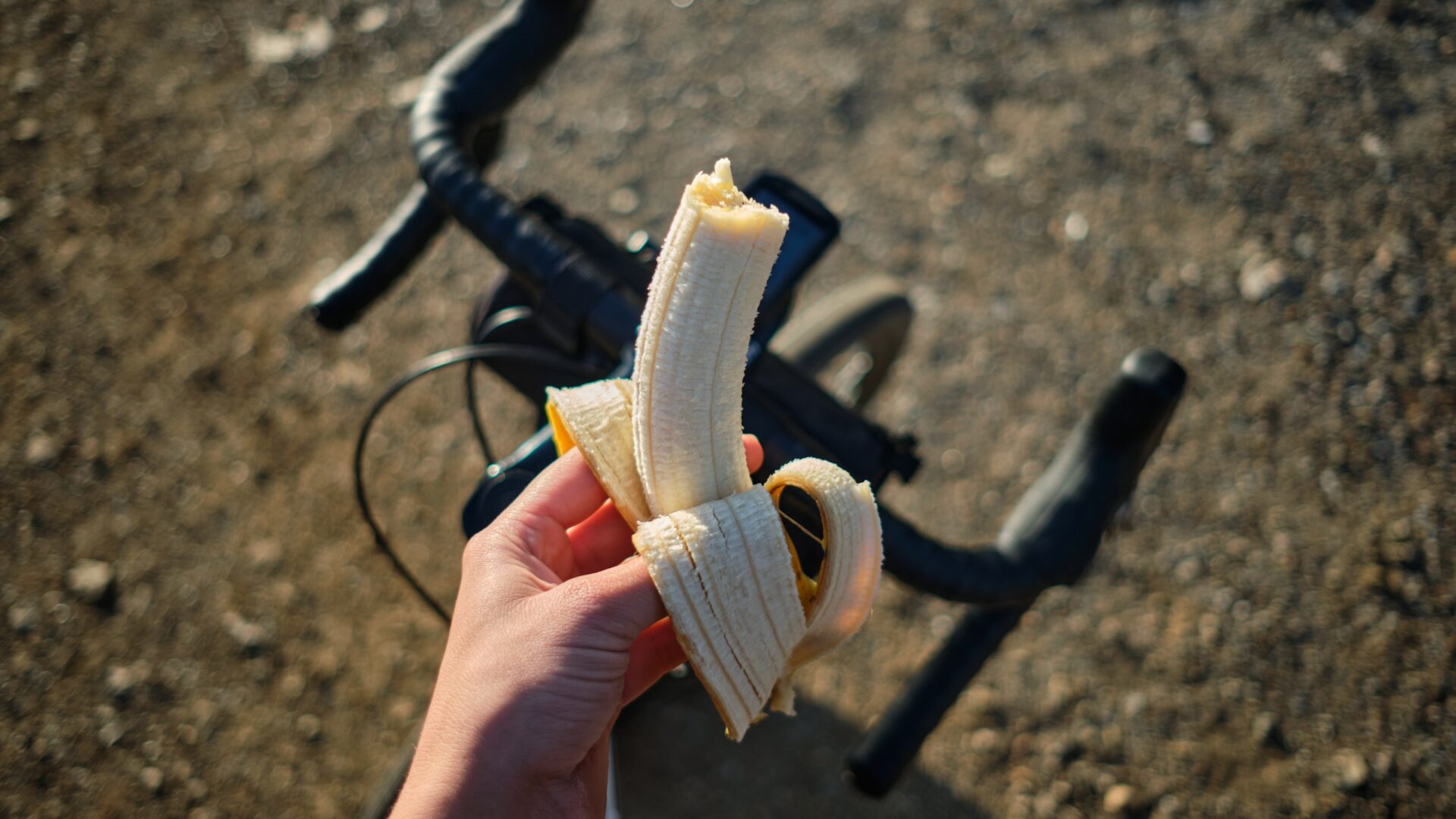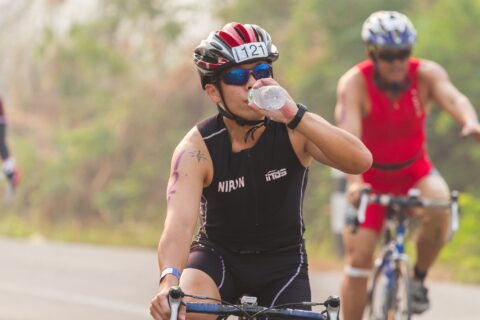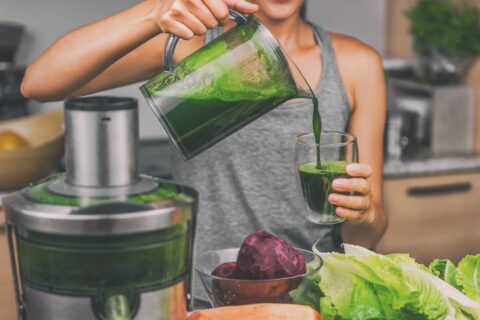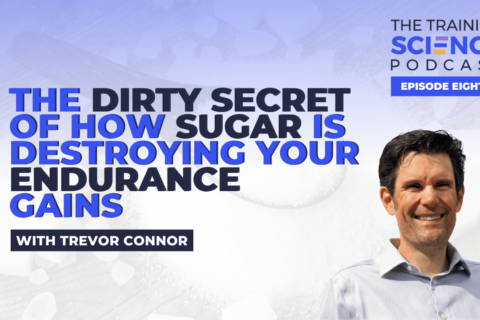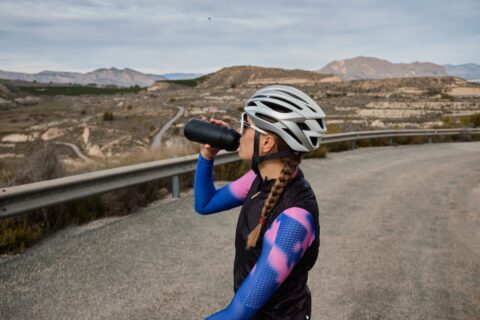In sports there’s a natural progression—as training science and knowledge improve, athletes continually reach new levels. Training feeds research and in turn research feeds training. This is the ever-evolving process of improvement.
One area that is unlocking large improvements in athlete performance is fueling during an event. Athletes, scientists, and coaches have known that the fuel in an athlete’s muscles is imperative for their performance. For decades the recommendation was to carbo-load days prior to the event to top off your stores—but to ingest very little during the actual event.
The reason was understandable: Stomach discomfort can derail a performance within moments, and with the body diverting blood flow away from the gut and toward the skin and working muscles, the likelihood of discomfort increases exponentially (even with the simplest of foods).
From sucrose to maltodextrin
The advent of sports drinks was a godsend for exercising endurance athletes. The simple sugars were easier to digest than other food products, especially at high workloads. Over time, the science determined that longer chain carbohydrates such as maltodextrin (a chain of glucose molecules) caused less distress than the simple sugars like sucrose (table sugar) that were in the original sports drinks.
The focus on maltodextrin inspired the next generation of sports fuel and athletes. Terms like “osmolarity” and “isotonic” became the norm as scientists focused on balancing the delivery of calories against the body needing to pull water into the gut to dilute the concentration. As a side benefit, sports fuels become less sweet as maltodextrin has only 5% the sweetness as table sugar.
More athletes were now able to fuel during exercise—and performance continued to improve—but there was still an upper limit to how much carbohydrate athletes could consume. This upper limit seemed to be about 200 kilocalories (kcal) per hour of activity, which basically amounted to one gel and one bottle of endurance sports drink per hour. The reason for this is simple: Our gut only has the ability to transfer 60g (240kcal) of glucose across its lining per hour. Consume more than that and the sugar sits in your gut waiting to be flushed out, which can be quite unpleasant. That change to glucose-based maltodextrin products helped us increase the hard upper limit in our intake.
How to fuel right without stomach upset
Recent research has seemingly unlocked the next level of performance and—believe it or not—it involves going back to our roots. Something unique about the original sports drinks was that they were sucrose (table sugar) based; but table sugar is actually composed of both glucose and fructose molecules. While we know that glucose transporters are capped at 60g/hour, fructose enters our bloodstream through a separate set of transporters, which allows carbohydrate uptake rates beyond the traditional upper limit.
To date there is a lot of research supporting the body’s ability to oxidize up to 120g of carbohydrate per hour when “multiple transport carbohydrates” (8,9,10,11,12,13,14) are utilized. But to be honest, the upper limit may well be far beyond this. Obviously simple table sugar isn’t a panacea—there’s a reason we moved away from it early in sports fueling. However, the combination of maltodextrin and fructose can eliminate some of the gut sensitivities that plague athletes. Additionally, specific protocols to “train the gut” can actually increase the transporters specific to moving sugar across the intestines and into the bloodstream.
How much carbohydrate you need
We know complex carbohydrates from whole foods in your daily diet differ from the large amounts of simple sugars needed for extended athletic performance. Glucose/maltodextrin-based carbohydrate supplementation is limited to ~250kcal per hour, but 500kcal/hr is possible if consuming multiple forms of carbohydrate, such as glucose and fructose.
However, whether carbohydrate consumption is beneficial to improving performance is dependent on the athlete, their workload, and the duration of their activity. To calculate your unique carbohydrate needs, use the formulas provided in this article, then apply the nutrition strategy in training to refine your intake for optimal performance.
References
1. Achten, J. et al. Higher dietary carbohydrate content during intensified running training results in better maintenance of performance and mood state. J Appl Physiol 96, 1331–1340 (2004).
2. Bartlett, J. D., Hawley, J. A. & Morton, J. P. Carbohydrate availability and exercise training adaptation: Too much of a good thing? Eur J Sport Sci 15, 3–12 (2014).
3. Febbraio, M. A., Chiu, A., Angus, D. J., Arkinstall, M. J. & Hawley, J. A. Effects of carbohydrate ingestion before and during exercise on glucose kinetics and performance. J Appl Physiol 89, 2220–2226 (2000).
4. HULSTON, C. J., WALLIS, G. A. & JEUKENDRUP, A. E. Exogenous CHO Oxidation with Glucose Plus Fructose Intake during Exercise. Medicine Sci Sports Exerc 41, 357–363 (2009).
5. Jentjens, R. L. P. G. et al. Oxidation of combined ingestion of glucose and sucrose during exercise. Metabolis 54, 610–618 (2005).
6. Jeukendrup, A. E. & Jentjens, R. Oxidation of Carbohydrate Feedings During Prolonged Exercise. Sports Med 29, 407–424 (2000).
7. Jeukendrup, A. E. Carbohydrate intake during exercise and performance. Nutrition 20, 669–677 (2004).
8. Jeukendrup, A. E. Multiple Transportable Carbohydrates and Their Benefits. Curr Opin Clin Nutr 13, 452–457 (2010).
9. Jeukendrup, A. E. Training the Gut for Athletes. Sports Medicine Auckl N Z 47, 101–110 (2017).
10. Podlogar, T., Cirnski, S., Bokal, Š., Verdel, N. & Gonzalez, J. T. Addition of Fructose to a Carbohydrate-Rich Breakfast Improves Cycling Endurance Capacity in Trained Cyclists. Int J Sport Nutr Exe 32, 439–445 (2022).
11. Podlogar, T., Bokal, Š., Cirnski, S. & Wallis, G. A. Increased exogenous but unaltered endogenous carbohydrate oxidation with combined fructose-maltodextrin ingested at 120 g h−1 versus 90 g h−1 at different ratios. Eur J Appl Physiol 122, 2393–2401 (2022).
12. Podlogar, T. & Wallis, G. A. New Horizons in Carbohydrate Research and Application for Endurance Athletes. Sports Med 52, 5–23 (2022).
13. Trommelen, J. et al. Fructose and Sucrose Intake Increase Exogenous Carbohydrate Oxidation during Exercise. Nutrients 9, 167 (2017).
14. Viribay, A. et al. Effects of 120 g/h of Carbohydrates Intake during a Mountain Marathon on Exercise-Induced Muscle Damage in Elite Runners. Nutrients 12, 1367 (2020).
